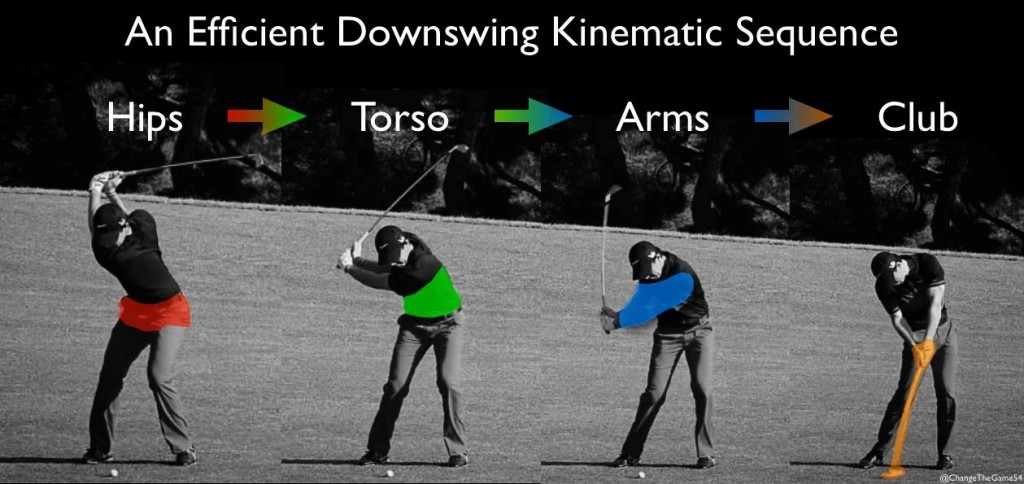Many times in a season I listen and watch as a student hits a bad shot and exclaims, “I swung too fast!” It’s a very common occurrence, but I can tell you that it is rare that I ever get a student that “swings too fast” – most of them would kill for a few more miles per hour of club head speed. So what’s missing? Let’s examine what is truly happening and how you can improve.
As I mentioned, I can’t remember ever teaching anyone who told me they wanted to swing slower. But most students have the feel of swinging too fast because they lack a very important element in their swings: sequencing. Usually when someone hits a bad shot and they feel as if the effort was rushed, it’s because the sequencing is either out of order or stalls out in a certain portion of the swing and the remainder of the body parts or club come crashing into impact.
The key here is to understand that what moves first and then practice those movements through drills that create flow in your swing. I’m a big believer in using a mirror to work on certain areas of the swing so that you can equate a visual to the feel and really get it right, but when it comes to sequencing I think it is highly critical to improve it in motion. One of the best images I have seen is a recent picture posted by golf coach & founder of The Leading Edge Golf Company in Edinburgh, Scotland, Oliver Morton. It truly illustrates the proper sequence of the body to deliver the club with speed.
So many amateurs wonder how players can hit the ball so far with looks like and “easy” swing. Simple – their sequencing is dead on and allows them to build maximum club head speed with minimum effort. Who wouldn’t want to do that? The best way is to use motion drills to help improve your sequencing. In my teaching, I still use a classic “Step Drill” to really get players to feel what they need to do to load and then unload with power. Simply set up, without a ball at first, with your feet together. As you swing the club back and the left arm (for right handed players) reaches parallel to the ground, pick up your left foot and take a tiny stride toward the target, then swing through. You just sequenced correctly! Try it a few more times, then add a ball and hit a few. It may take you a few tries to get it right, but start smooth and you will begin to feel the power build up and release in the right order in your swing. Then, try the drill with a normal width stance, and instead of picking up and striding to the target, just pick up your left foot a touch and press it back down into the ground to activate the change of direction and use the ground for power. Using these drills gives you a keen sense of how the club is still moving back as the downswing sequence starts, which creates maximum speed and can lead to much better overall ball striking.
So the next time you hit an ugly shot and want to slow down, think it over. Work on your movements by letting the dominos fall in the right order and you will find that you can add more speed with less effort. More club speed and distance awaits!




